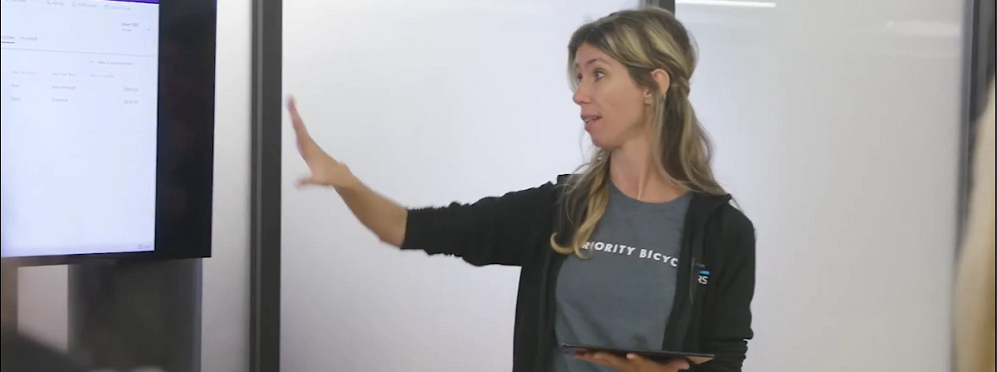2023 Wave 2 Release Notes: D365 Customer Service

If you read my most recent article, you have probably heard that the release notes for 2023 Release Wave 2 came out on July 18, 2023! As I mentioned in last week’s article, I had a chance to look them over and I am writing another series of articles on the new features and updates that are part of this release. I started last week with the first part of this series focused on Dynamics 365 Sales. Keep in mind that at the time this and last week’s article were written, I didn’t have early access to most of these features yet, which means that I was unable to test them or play around with them. It’s very likely that I will write more detailed articles in the future, on the features mentioned in this release. But now, let’s dive right into the features that are coming to Dynamics 365 Customer Service as part of this release wave!
Use overflow to handle lengthy wait times for queues
What is overflow you might ask? Overflow basically means that too many calls are coming in, and not enough agents are available to handle all the work items coming in. So, what happens with the work items that are not picked up by an agent? I’m glad you asked! This feature will allow administrators to set a wait time limit for work items, which decides when a work item will be marked for overflow. (This means something else needs to happen since there are no agents available in the current queue to handle the work item.) Admins can also configure what needs to happen when a work item is marked for overflow, for example transfer them to another queue with more agents, send the item to voicemail or arrange for a call back by an agent. This feature will allow call centers to have a backup plan during sudden spikes in customer queries.
A new call control user interface with intuitive icons for the voice channel
If you’re wondering where the communication panel is in the Customer Service Workspace, this is the area where you’re directly communicating with the customer through chat, sms, whatsapp, twitter, call, etc. (The communication panel is only available when you’re having an active (live) conversation with a customer.) Part of the communication panel is the call control! As you (hopefully) can see on the image below, the call control in Dynamics 365 Customer Service gets a make-over in this release! You’ll notice the updated control in the image below has larger icons and shows a description next to each button, which is visible without having to hover a mouse over them. You’ll also notice that the ‘transfer’ and ‘consult’ buttons are now listed above the black controls, next to the customer’s name, on the right side. On the legacy control these buttons showed on the bottom of the communication panel. I have to say I really like this new layout and fresh look!

Conversation centric agent experience for channels
The last feature related to the Communication Panel lets agents personalize the panel in the Customer Service Workspace, by allowing agents to set the size of the panel for any given channel. As an example this could mean that the communication panel for the chat channel could be configured to be smaller (or larger) than the communication panel for the Teams channel.
Show agents their live chats and voice calls in the inbox
If you’re using the ‘Inbox’ functionality in Dynamics 365 Customer Service, you’re going to like these enhancements to the customer service inbox. In this release, we will be able to route live work items to an agents’ inbox. ‘Live’ work items can be identified and filtered out as shown in the screenshot below. It’s not certain at this time if these live items are limited to voice and chat only, but we should be able to try this out pretty soon as this feature shows as available for early access.

Copilot and AI innovation
Summarize support cases with Copilot
Copilot for Customer Service has been in public preview since May of this year. A lot of the features mentioned in this section are available in this preview today. If you are not familiar with Copilot for Customer Service, please take a look at the article and video that I published on this topic here. This particular feature uses AI to create a summary of a case for an agent. When an agent opens a case, Copilot looks at case notes, case details, emails and conversation summaries to put the case summary together. The summary will show on the case form in a collapsed state, but agents can access the summary by expanding the section. From there they can copy the summary and attach it as a note. I would’ve liked a ‘Add note’ button here to automatically create a note with the summary, but perhaps this is something that will be added later. I do think this is a great feature because it will allow customer service agents to get up to speed a lot quicker vs if they would have to read through all this information themselves!

Summarize conversations with Copilot
I love this feature as well, because this allows Copilot to create a summary of the entire chat or voice conversation in Dynamics 365 Customer Service. Yes, this is similar to the above feature, but instead of summarizing the case, Copilot is summarizing the conversation. This way agents don’t have to scroll through the entire conversation to find out what has been said and what is going on, making them faster and more productive. (Think about a customer having a long conversation with a chat bot before being handed off to an agent, this will allow the agent to quickly get up to speed to what was discussed!) This is also a feature that has been in public preview (since June 2) and according to the release notes this will go to GA in October 2023.
View analytics for Copilot’s impact on your business
As you might have expected, copilot comes with detailed reporting capabilities which can be accessed through the Customer Service Historical Analytics menu item. These reports will help managers see how agents are utilizing copilot capabilities. You can enable the Copilot report by navigating to CS admin center > Insights (below the operations section) and clicking ‘manage’ on the right-side of ‘Customer Service Historical Analytics’. You’ll see a checkbox to add historical analytics for copilot(preview) button which needs to be checked.
The Copilot report contains the following key metrics:
- Daily active users: Displays the number of unique users who used any of the Copilot features in the last day.
- Percentage of copilot responses used: Displays the number of responses that Copilot
- generated across all copilot features, and the percentage of those that were actually
- consumed by the agents.
- Agent ratings: Users are allowed to provide a thumbs-up or thumbs-down on Copilot
- when they use any of its features. The trend of the aggregated data provides an
- understanding of user satisfaction.
- The following metrics display two values that indicate when Copilot is and isn’t used:
- Average handle time for conversations: Displays the impact on the Average Handle
- Time metric of conversations.
- Average days to close for cases: Also known as Case Resolution Time.
- Average email response time: Displays the time taken to draft and send an email.
Discover knowledge content with Copilot
This feature has also been part of the Copilot preview in May. There will be some additions to the functionality mentioned in the article I wrote on this topic, like the ability to link a copilot conversation to a case automatically, the ability to store copilot conversations in Dataverse and the ability to use responses that are generated from Dynamics 365 knowledge articles, external sources, and public websites. This means agents can see how similar cases have been resolved by other agents.

Draft email replies with a click using Copilot
I’m sure you are familiar with this feature, that is, if you’ve seen my article and/or video on Copilot for Dynamics 365 Customer Service (preview) which you can find here. This feature uses AI to create draft email messages for customer service agents. You might have seen a similar feature in Copilot for Viva Sales and Copilot for Dynamics 365 Sales. (which is also in preview today.)
Draft messaging replies with a click using Copilot
Another feature that is part of the current preview of Copilot for Dynamics 365 Customer Service allows agents to use copilot to generate a response while on a live conversation with a customer. Again, please refer to my article here to get a better understanding of these capabilities.
Omnichannel
Improvements to the call dialer
The embedded dialer in Dynamics 365 Customer service is also getting a make-over. Agents will notice the dialer looks slightly different and some of the updates to the dialer include: contact lookup, contact management, number country detection and number formatting.
Transfer calls to Teams users without phone numbers
This is a big one! This update will allow the agents to use VOIP (Voice Over Internet Protocol) calls to contact internal members. This is important because this means that agents can now transfer calls to agents who don’t have a Teams phone number! On top of that, VOIP is a lot cheaper than calls through Teams phone numbers, AND customers won’t have to pay for a phone number for every team member! This is a big win all around!
Caller ID number support for outbound calls
With this release also comes the ability for admins to configure a caller ID for outbound calls. This can be helpful, because with no caller ID phone companies or customers might think these calls are fraudulent. The outbound caller ID (including company name and number) will be shown to customers when an agent calls a customer or transfers a call. (I.E to an external number)
Teams Integration
Join me on Teams
This feature will allow agents to switch their calls to a teams call by clicking one button. Users will notice a new ‘Join me on teams’ section that will be visible in the right side pane previously called the productivity pane. I think this is a big one, because using teams will allow agents to initiate a screen sharing session with the customer and even switch to a video call.

Collaborate using Teams embed chat without having to enable it
This setting was something that organizations needed to enable, but after this release embedded chat will be enabled by default for all organizations in these places:
- Customer Service Hub
- Customer Service Workspace for all out-of-the-box agent workspace profiles. For any custom profile, a Dynamics 365 admin will still need to turn on embed chat for it to show
- in the productivity pane.
At any time, a Dynamics 365 admin can disable the embedded chat feature if desired.
Unified Routing
Route calls to agents who are idle for longest period
In this release there will be another option for routing in Dynamics 365. This option will allow organizations to route phone calls to agents who have been the least active for the longest period of time, which allows organizations to ensure better use of their agents.

This will also allow agents to have a break between calls, which again will result in a better customer service experience for customers. It’s important to note that this new assignment method will be the default assignment method for new voice queues, but this can be changed. The default setting will not impact existing voice queues. I hope you enjoyed reading this article! Be sure to check in again next week to learn all about the functionality in 2023 Release Wave 2 for Field Service, or subscribe here to never miss another post!












Comments are Closed